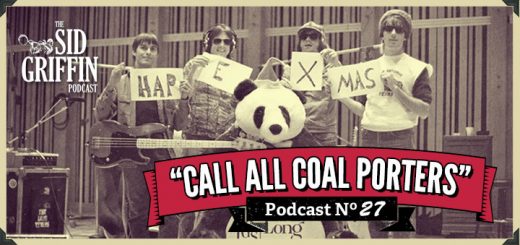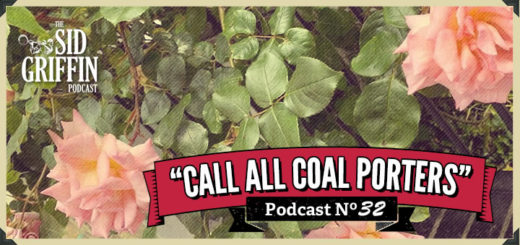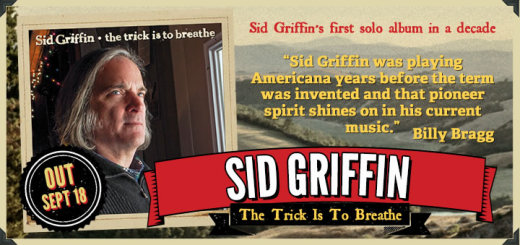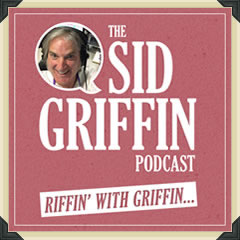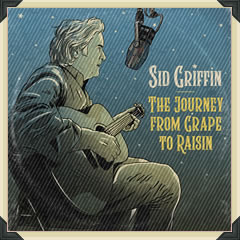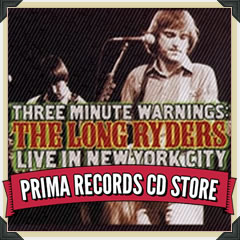Turn On the Basement Lights
Rock writer/Dylan freak Sid Griffin attempts to crack one of music’s great mysteries.
by Justin F. Farrar
Music fans have been stuffed with enough Bob Dylan product to keep ’em fat through the next century. The music industry will pump out anything it can on the guy, no matter how repetitive or gratuitous. Dylan’s longtime label, Columbia, just dropped yet another anthology of previously released material: the triple-disc set Dylan. And on October 30, Sony will release the Other Side of the Mirror: Live at the Newport Folk Festival DVD. It’s far more interesting than Dylan, but still, a lot of this footage already appears in numerous formats.
But there are always exceptions, and this time around, it’s Sid Griffin’s book, Million Dollar Bash: Bob Dylan, the Band, and the Basement Tapes.
The Basement Tapes album might be rock’s greatest mystery. In July of 1966, at the height of his popularity, Dylan crashed his motorcycle and suddenly dropped out of the spotlight amid a hurricane of rumors about nervous breakdowns, drug addiction, and even death.
Over the next year, he called Woodstock, New York, home and recorded more than 100 songs with his backing band, the Hawks (eventually rechristened the Band), in the basement/garage of their nearby home, “Big Pink.” But beyond a 24-track double LP in 1975 — a chunk of which isn’t even true Basement Tape material — the recordings have only been available as crappy-sounding bootlegs. And that’s all anybody really knew — until now.
Griffin, a former member of country rockers the Long Ryders, is the first writer to shed serious light on this shadowy period in Dylan’s career. Moreover, he unloads a totally refreshing perspective on the music, making novel connections to the Byrds, Velvet Underground, alt-country, Americana, and modern indie rock. And he does it all without a sliver of access to the man himself.
Scene recently phoned Griffin at his London home and found a man totally obsessed and exploding with Dylan knowledge.
Unlike Greil Marcus’ Invisible Republic: Bob Dylan’s Basement Tapes, which only adds more mythology to the story, Million Dollar Bash reads like a detective story that methodically attempts to solve the mystery behind this music.
Marcus is a great writer, but he gets off the subject of the Basement Tapes to deliver sociological sides and state-of-the-union reports of the America of the 1860s and ’40s. I didn’t do that. I mean, what were these guys doing in Woodstock? It’s a weird story. In 1966 Dylan is chasing the Beatles commercially and catching up. He is going to play Shea Stadium. But the motorcycle accident gets in the way, and he cancels the tour, an ABC television special, and his novella Tarantula. He also cancels all [previously scheduled] recording commitments. Yet 1967 is the year Dylan spends the most time recording and writing the greatest number of quality songs. Off the top of my head: “This Wheel’s on Fire,” “You Ain’t Going Nowhere,” “I Shall Be Released,” “Lo and Behold,” “Tears of Rage,” plus “All Along the Watchtower” on John Wesley Harding. And none of this stuff, except “Watchtower,” comes out at the time. We simply don’t have a story of a pop-culture figure that’s similar.
Why do you think Dylan recorded this music the way he did?
I obviously don’t know the real answer. No one knows the official story, but I kind of pieced it together. Here’s my speculation: Dylan is up in Woodstock, but he has this wonderful band on retainer, who are doing bugger all in a New York hotel — partying on Bob Dylan’s tab. So it’s [manager] Albert Grossman saying to Dylan, “The money is going to dry up. We canceled our tours and an ABC special. Bob, do something.” Grossman’s twin plan is to release a greatest-hits package and get this band up to Woodstock to fire Dylan up. If Grossman takes Bob to a New York studio, he might scare the horses, so to speak. So he’ll arrange something informally. There’s no clock, and Dylan is allowed to find a direction in comfort. And they just stumbled into this. The reason why I think this is, the initial Basement Tapes [recorded in spring of 1967] are just covers and songs made up on the spot. They don’t get serious until we get into summer, and they don’t get real serious until September.
A lot of rock critics frame The Basement Tapes as the great oddity in Dylan’s discography, but you believe it’s his greatest achievement of the ’60s.
Most baby boomers think the great Dylan hat-trick is Bringing It All Back Home, Highway 61 Revisited, and Blonde on Blonde. But for me its Blonde on Blonde, The Basement Tapes, and John Wesley Harding. Joe Boyd, producer for Fairport Convention, believes Dylan would’ve never gotten away from all those fanatics on his roof who thought he was God, had he made a proper album of these tapes. It seems as if this whole period was Dylan’s reaction to all the intense media attention. It was absolutely out of control by mid-’66. He now had a family and wanted some peace. So he dropped out.
It’s interesting how you argue that Dylan and the Band’s informal home-recording process, as if it’s just a bunch of friends jamming, is a major influence on not just modern rock, but indie music as well.
I think the lo-fi quality sound of all the bootlegs out there has inspired the indie approach. And, of course, now we have U2, Daniel Lanois, and his crowd recording in his house. Neil Young records things in a barn on his ranch. These folks are all inspired by Dylan and the Band. The Beatles too, for their Get Back sessions [in 1969].
Ironically, the original master tapes sound much better than the bootlegs and the 1975 LP, right?
People who have heard the very original tapes — some of Neil Young’s crowd — say Garth [Hudson, keyboardist for the Band] did a wonderful job of engineering. It’s not the primitive sound that all of us have heard.
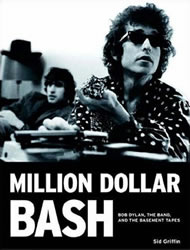 Any chance of an officially expanded release one of these days?
Any chance of an officially expanded release one of these days?
Well, Dylan didn’t make himself available for my book, but I know for a fact that Dylan knows of it. I’ve been lobbying for an expanded version of The Basement Tapes. I’m hoping one day they’ll go for it in Dylan’s Bootleg Series. You could easily do a three-CD remastered collection.
This article was originally published in Scene magazine in October 2007.
‘Million Dollar Bash: Bob Dylan, the Band, and the Basement Tapes’ is Available in all good bookshops and at amazon.com and amazon.co.uk

